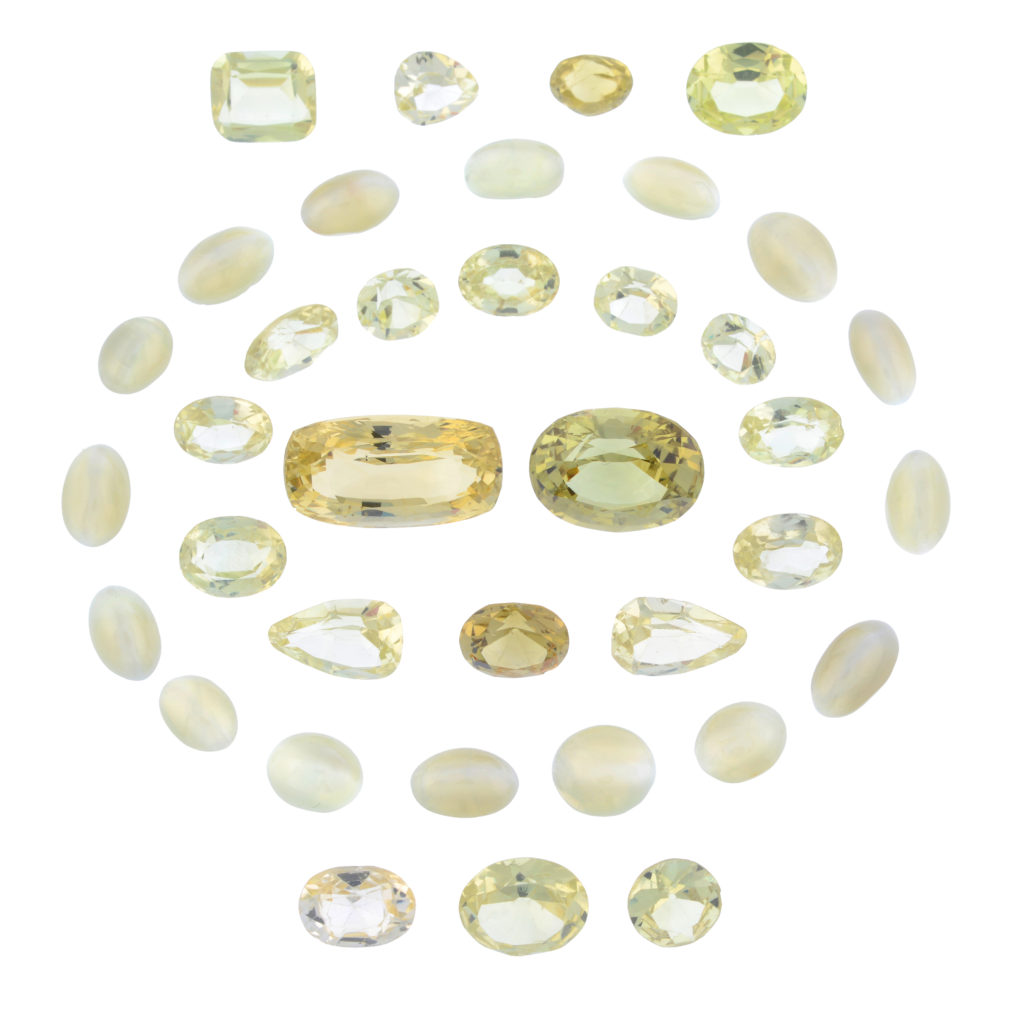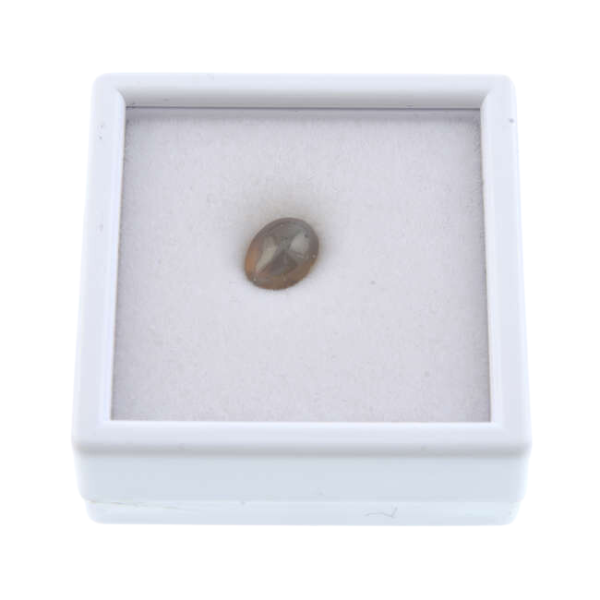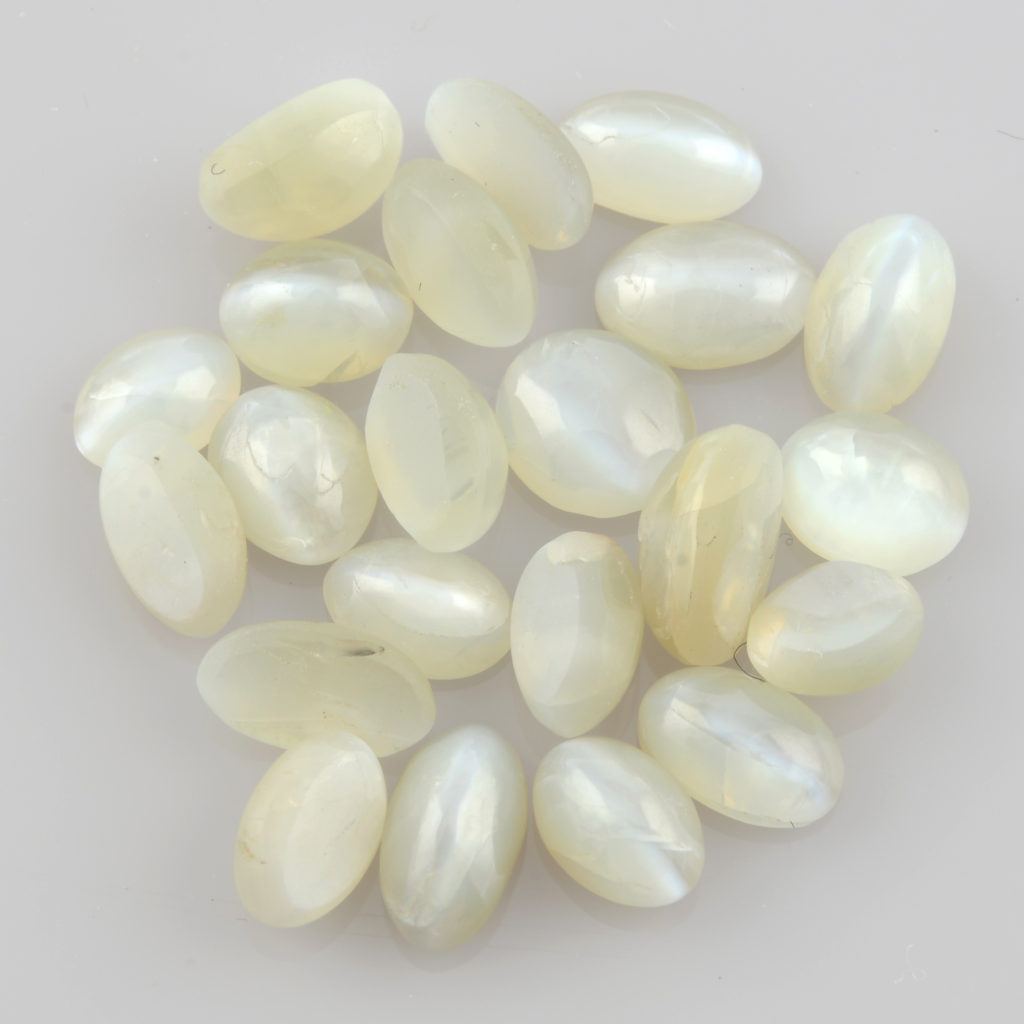Chrysoberyl is one of the most underrated gemstones of recent decades. This remarkable gem, known for its yellow, green, and brownish hues, derives its name from the Greek words chrysos meaning "golden" and beryllos meaning "gem crystal." Although the name ‘chrysoberyl’ was officially coined in 1790, this gemstone had already been used in jewellery for centuries.
Not to be confused with the beryl group—which includes emeralds, morganites, and aquamarines amongst others—chrysoberyl is a fascinating gemstone in its own right. Known for its exceptional brilliance, it ranks as the third hardest naturally occurring gemstone on Earth, with a score of 8.5 on the Mohs scale of hardness, surpassed only by diamond and corundum.
Chrysoberyl is most famous for the stunning optical effects exhibited by two of its varieties: cat’s-eye chrysoberyl and the colour-changing chrysoberyl known as alexandrite.

Varieties of Chrysoberyl
Multiple varieties of chrysoberyl exist, each with its own beautiful and unique properties.
Alexandrite
Alexandrite was discovered in Russia in 1834 and was named after Czar Alexander II. Its extraordinary ability to change colour—from green in daylight to red/purple under incandescent light—captivated jewellers and the monarchy . Alexandrite became a much-admired gemstone, particularly in early Victorian jewellery, and its rarity has only increased over time.
Cat’s-Eye Chrysoberyl
The other notable variety of chrysoberyl is cat’s-eye chrysoberyl, known for its mesmerizing optical effect called chatoyancy. This phenomenon, caused by the gemstone’s internal structure, creates the appearance of an opening and closing eye on the dome of a cabochon-cut stone.
Cat’s-eye chrysoberyls were highly regarded in Asia, where they were often used in jewellery representing the deity Vishnu and were believed to protect the wearer from evil. During the Edwardian and Victorian eras, the gemstone became highly fashionable. It reached the height of its popularity in 1860 when the Duke of Connaught, Queen Victoria’s son, presented a cat’s-eye engagement ring to his fiancée. This event sparked a surge in demand, overwhelming the mines in Sri Lanka, which struggled to meet the requests.
Benefits and Spiritual Properties of Chrysoberyl
For those who believe in the spiritual power of gemstones, Chrysoberyl is said to be a stone for new beginnings as it can bring confidence and compassion. Additionally, it helps to break out of negative cycles. Also, chrysoberyl allows forgiveness and helps maintain a balanced view. So if you have any important decisions to make, maybe a little bit of Chrysoberyl could help you out.
A Rare Treasure
Today, jewelers use chrysoberyl less frequently, and collectors often prize it. Specimens exceeding 5 carats are considered exceptionally rare. Chrysoberyl's scarcity is attributed to the unique geological conditions required for its formation. The presence of beryllium is essential, as well as a mineralogical environment, which favours the grown of these peculiarly-shaped crystals. These crystals form under high-pressure and high-temperature conditions, which are relatively uncommon. Additionally, the crystals are typically small, making commercial mining less viable.
The limited availability of beryllium further restricts the locations where chrysoberyl can be found. The most famous deposits were in Russia’s Ural Mountains, where alexandrite was initially discovered. Unfortunately, these deposits have been exhausted. Today, the most active chrysoberyl mines are located in Brazil, Sri Lanka, Myanmar, the United States, India, Zambia, and Zimbabwe.
Chrysoberyl at Auction
Chrysoberyl is a versatile gemstone with several attractive varieties. Its hardness and unique optical properties make it a desirable choice for jewellery and collectors alike.
Gemstones | Friday 13th December 2024
Viewing times (ID required):
Birmingham
Thursday 12th December 10:00-16:00
Virtual viewings are available by request. Virtual viewings are the ultimate personal shopping experience.














